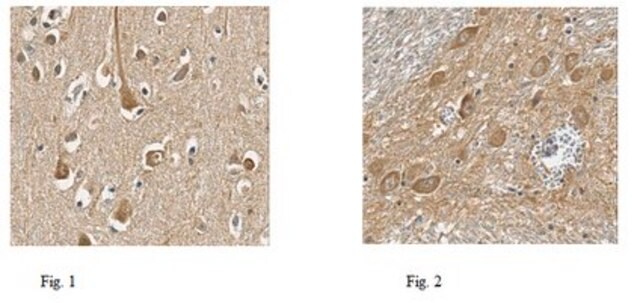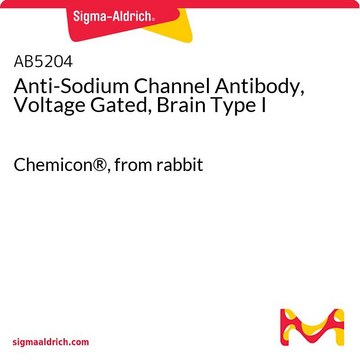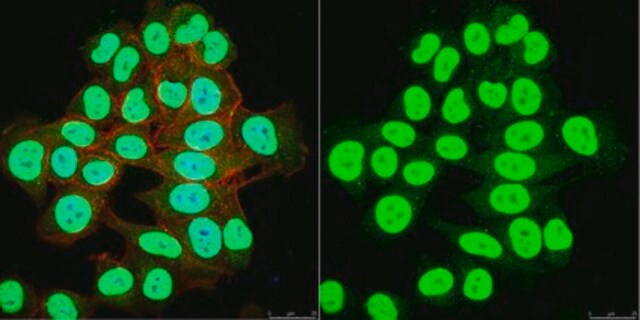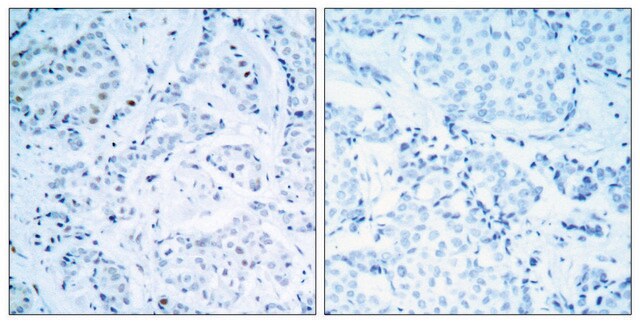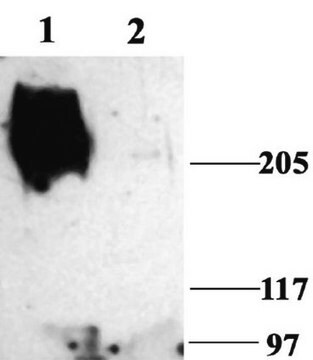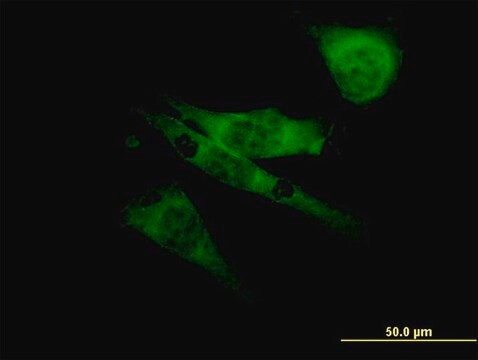推荐产品
生物源
rabbit
品質等級
抗體表格
affinity isolated antibody
抗體產品種類
primary antibodies
無性繁殖
polyclonal
純化經由
affinity chromatography
物種活性
rat, human
製造商/商標名
Chemicon®
技術
western blot: suitable
NCBI登錄號
UniProt登錄號
運輸包裝
dry ice
目標翻譯後修改
phosphorylation (pSer58)
基因資訊
human ... YWHAE(7531)
特異性
14-3-3 Protein, phosphoSerine58. The antibody recognizes a protein of ~29 kDa corresponding to 14-3-3 Protein, phosphoSerine58 in lysates from rat brainstem. Immunolabeling is blocked by the phosphopeptide used as the immunogen but not the corresponding non-phosphopeptide.
The immunogen sequence has 100% conservation with mouse and Xenopus.
免疫原
Synthetic peptide of amino acids surrounding the phosphoSerine 58 site of rat 14-3-3 Protein.
應用
Anti-14-3-3 phospho Serine58 Antibody detects level of 14-3-3 phospho Serine58 & has been published & validated for use in WB.
Research Category
Neuroscience
Neuroscience
Research Sub Category
Neurodegenerative Diseases
Neurodegenerative Diseases
Western blot: 1:1,000
外觀
ImmunoAffinity Purified
Liquid in 10 mM HEPES (pH 7.5), 150 mM NaCl, 100 μg/mL BSA and 50% glycerol.
儲存和穩定性
Maintain at -20°C in undiluted for up to 6 months after date of receipt. Avoid repeated freeze/thaw cycles. Do not store in a self defrosting freezer.
法律資訊
CHEMICON is a registered trademark of Merck KGaA, Darmstadt, Germany
免責聲明
Unless otherwise stated in our catalog or other company documentation accompanying the product(s), our products are intended for research use only and are not to be used for any other purpose, which includes but is not limited to, unauthorized commercial uses, in vitro diagnostic uses, ex vivo or in vivo therapeutic uses or any type of consumption or application to humans or animals.
未找到合适的产品?
试试我们的产品选型工具.
儲存類別代碼
10 - Combustible liquids
水污染物質分類(WGK)
WGK 2
14-3-3 proteins in the nervous system
Berg, Daniela, et al
Nature Reviews. Neuroscience, 4, 752-762 (2003)
Unlocking the code of 14-3-3.
Dougherty, Michele K and Morrison, Deborah K
Journal of Cell Science, 117, 1875-1884 (2004)
Joanna M Woodcock et al.
The Journal of biological chemistry, 278(38), 36323-36327 (2003-07-17)
The 14-3-3 proteins play a central role in the regulation of cell growth, cycling, and apoptosis by modulating the functional activities of key signaling proteins. Through binding to a phosphoserine motif, 14-3-3 alters target proteins activities by sequestering them, relocalizing
14-3-3 proteins: a number of functions for a numbered protein
Bridges, D. and Moorhead, G.B.G.
Science's STKE : Signal Transduction Knowledge Environment, 2005, re10-re10 (2005)
Jan Silhan et al.
The Journal of biological chemistry, 279(47), 49113-49119 (2004-09-07)
14-3-3 proteins are important regulators of numerous cellular signaling circuits. They bind to phosphorylated protein ligands and regulate their functions by a number of different mechanisms. The C-terminal part of the 14-3-3 protein is known to be involved in the
我们的科学家团队拥有各种研究领域经验,包括生命科学、材料科学、化学合成、色谱、分析及许多其他领域.
联系技术服务部门